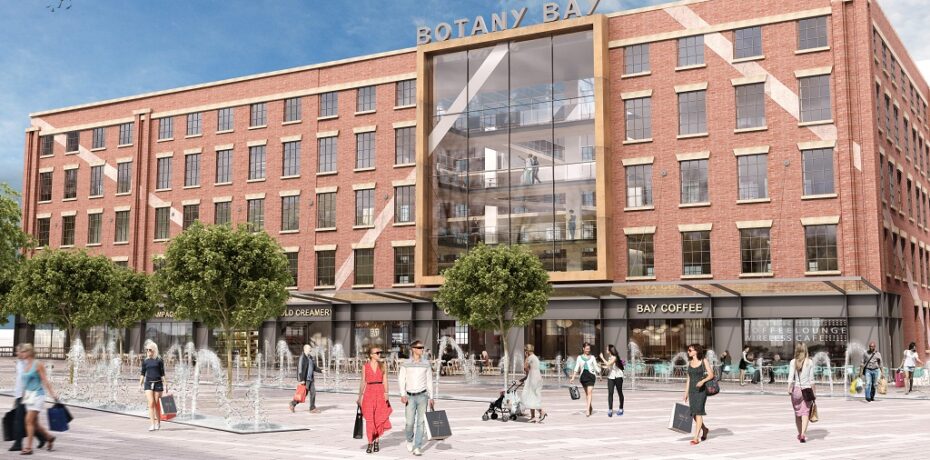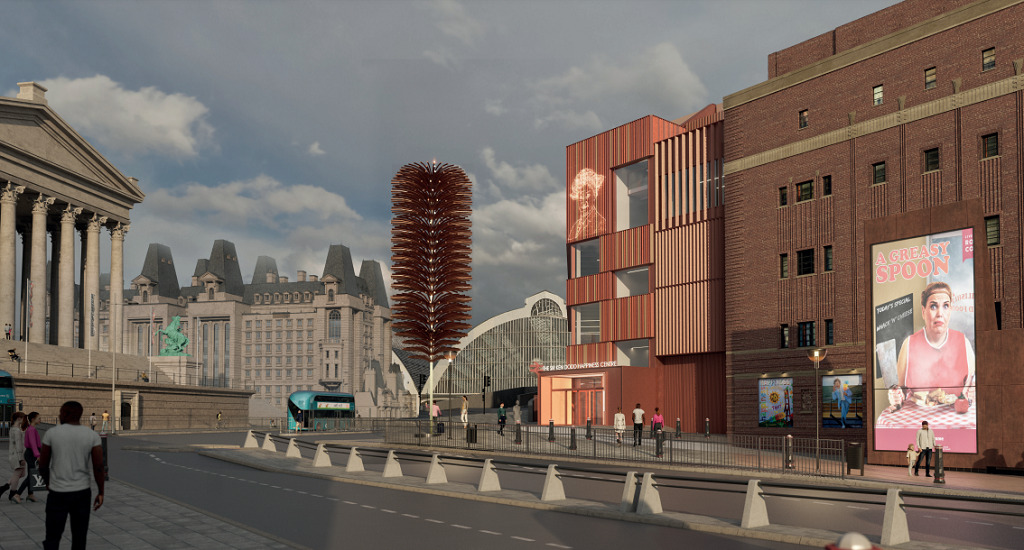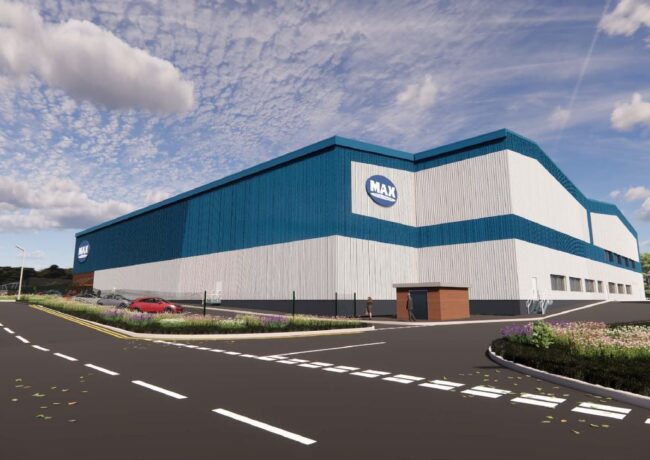The Subplot
The Subplot | Greensill’s offices, Lancaster’s hopes, Toys R Us
Welcome to The Subplot, your regular slice of commentary on the North West business and property market from Place North West.
THIS WEEK
- Greensill, the Daresbury Daredevil. Lex Greensill’s businesses helped create the impression of a boom in the Daresbury office market. Does the Greensill collapse leave a property nightmare behind?
- Dead in the water. Lancaster City Council rethinks the Canal Quarter scheme yet again, but sets its face against all but the safest financial commitments. Does that mean the project is already doomed to failure?
- Botany Bay boss Tim Knowles manages to keep smiling, despite the trauma of taking on the Toys R Us portfolio and its £363m debt.

GREENSILL: THE DARESBURY DAREDEVIL
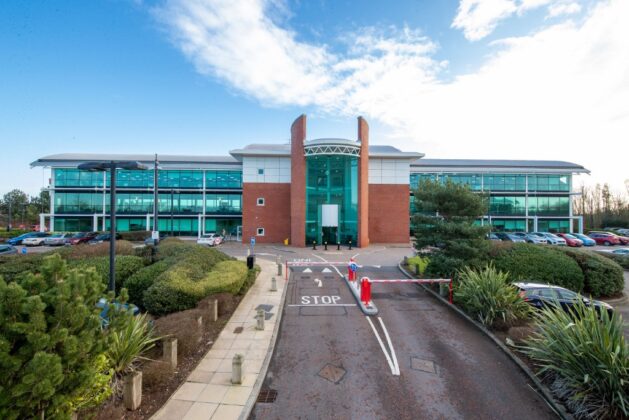 What Lex left behind
What Lex left behind
The spectacular implosion of the Greensill financing business is bad news for an ex-prime minister and international bankers. It also leaves landlords in Daresbury with a lot of floorspace to re-let. Who will feel the pain?
The Greensill Capital (UK) supply chain finance business took a tumble last month: a host of big names, including Credit Suisse, SoftBank and former prime minister David Cameron, are now trying to work out the costs to their balance sheets and reputations. The story has yet to receive Enron-like public recognition, but that will surely come. For the landlords of 62,000 sq ft of Warrington floorspace the Greensill collapse poses a more immediate problem.
Too good to be true
Lex Greensill liked Daresbury Business Park, the 225-acre industrial zone close to Junction 11 of the M56. Greensill signed up for 6,000 sq ft at 3 Cinnabar Court in 2016, and then expanded into units 11B and 11A, which were combined to provide 10,200 sq ft. But the real action was last year when Greensill took 19,600 sq ft at Orbit Development’s 41,000 sq ft 1100 Daresbury Park and 27,000 sq ft at Columbia Threadneedle Investments’ Daresbury 2100.
Not so lucky
Columbia Threadneedle signed Greensill in January 2020 at a time when it was still a name to savour: it did so just months after SoftBank’s Vision Fund had taken an $800m bet on Greensill, and back then Softbank seemed to be picking winners. Columbia agreed a 10-year lease on a rent widely believed to be £16.50/ sq ft with, it is also widely believed, 12 months’ rent free.
Expensive
Columbia will not, of course, see most or perhaps any of the £4m income stream it had been expecting. If the rent-free period was commuted into a capital contribution, then it is on the hook for £445,000. Subplot asked Columbia what the damage was, but it declined to say.
Time to think
Whether by luck, judgment, or due diligence, Orbit came off better. The Greensill empire began to unwind in March 2020 with a court action in New South Wales and insolvency proceedings in Germany. By August, when Greensill sought extra floorspace in Daresbury, any landlord that could use Google would have seen the red flags. Orbit agreed a licence not a lease, and the licence had plenty of rapid breaks. Greensill paid the rent like a lamb throughout its occupation.
The Greensill boom
Greensill’s activities created the appearance of a boom in the Daresbury office market. Its take-up rose from roughly 50,000 sq ft in 2019 to around 70,000 sq ft in 2020. The Greensill floorspace is back on the market, or soon will be, and 2020 was obviously not a year to rely on. But Greensill’s fondness for Daresbury wasn’t so stupid.
Don’t panic
The proof: viewings are already happening at Cinnabar Court and down the road at the Orbit unit, and Orbit director Paul Hubball is surprisingly relaxed. “It is disappointing to lose a large tenant but we are not overly concerned about re-letting the space,” he says. “Enquiries for Daresbury tend to be real. They really want Daresbury, you aren’t dragging them to the location.”
More to come
Does this enthusiasm open the door to speculative development in Daresbury? On the face of it, top rents of £17.50/sq ft do not justify the risk, and that is why it is a decade since anyone last tried. But the area’s changing demographic is changing the calculations. Schemes aimed at a science audience can command premium rents. Project Violet, 42,000 sq ft of specialist laboratory space being developed by Langtree at Sci-Tech Daresbury, is being offered at £22-23/sq ft and already appears to have attracted an 18,000 sq ft pre-let. “Sci-Tech Daresbury is currently in discussions with a number of strongly interested science and technology firms,” a Langtree spokesperson told Subplot.
So could it work?
Langtree’s experience suggests new offices aimed at in-demand sectors could be let at rents that would justify speculative development. Simon Roddam, director of local agent BE Group, says: “In the last few years questions about viability have been asked by quite a few developers. And it’s a good question because year-on-year Daresbury regularly sees headquarter deals, and Langtree has put a spade in the ground already.” Langtree’s next phase, a vision for 180,000 sq ft Project Ultraviolet, is a sign of things to come. Other developers may follow suit.
Dare to hope
The Daresbury office market is still small: the total office stock is not much above 500,000 sq ft, compared to a Warrington market of 5.5m sq ft. But its separate identity is a strength, as are its links to the region’s science sector and the west. Daresbury can be expected to make a quick lift-off when business life returns to normal.
DRIVING THE WEEK
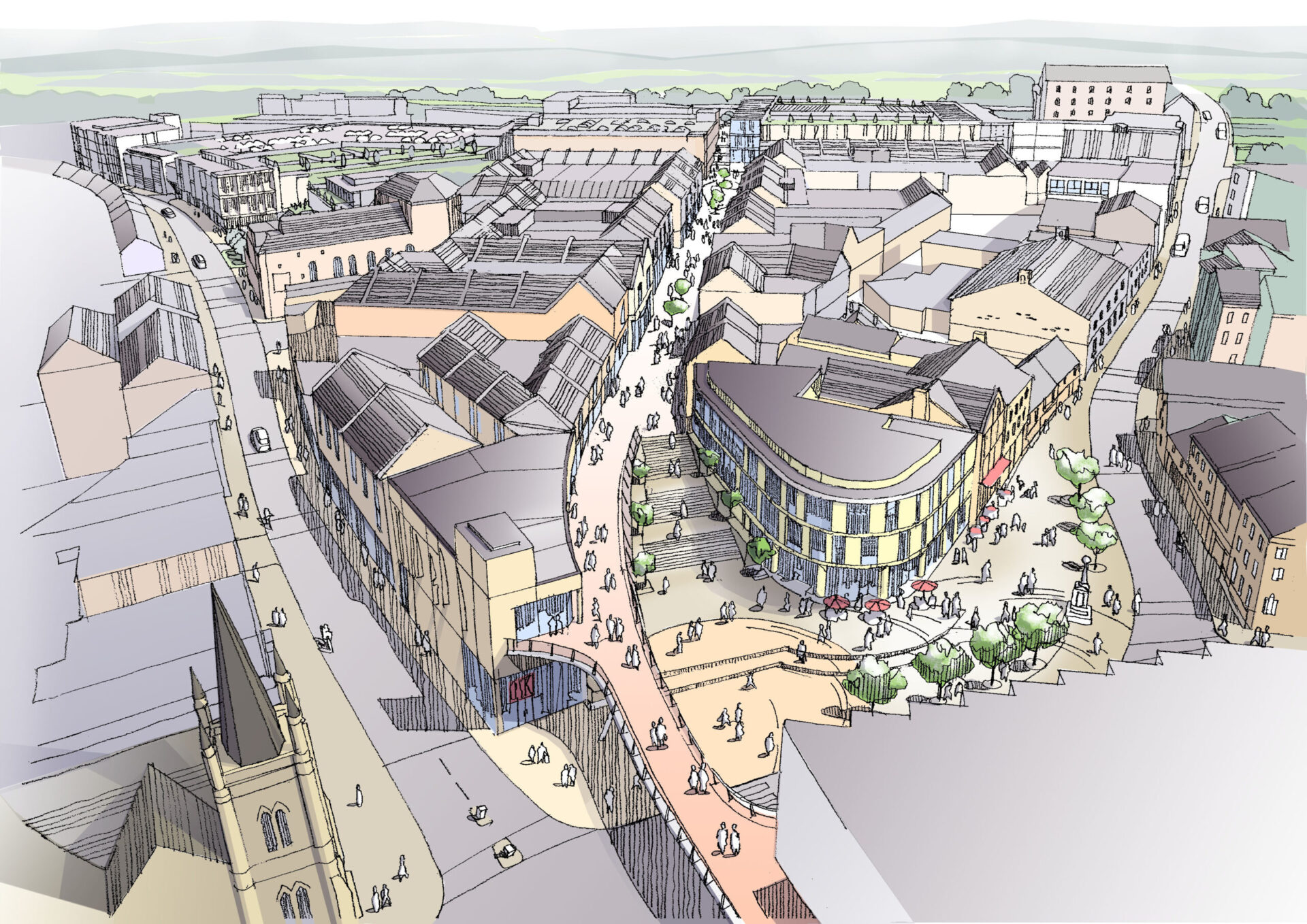 Lancaster Canal Quarter: dead in the water
Lancaster Canal Quarter: dead in the water
Lancaster City Council is seeking a masterplanner for the city’s 16-acre Canal Quarter. This will be the area’s third development proposal in 20-year history of failure. Does the council’s attitude mean it is already doomed?
The Canal Quarter development is the gamechanger that could transform historic Lancaster. A strategic regeneration framework (you can read it here) has been drawn up by Avison Young and Planit-IE. It promises 500 homes, hotels, 190,000 sq ft offices, 60,000 sq ft retail and a prominent cultural and artistic offer, all designed to avoid threatening the existing city centre. Now the hunt is on for a masterplanner as work begins on the latest iteration of a two-decades-old project that so far has gone nowhere fast.
Bad history
Do you remember the rhyme about Henry VIII’s wives: “Divorced, beheaded, died: divorced, beheaded, survived”? The line-up of developers associated with the Canal Quarter since 2000 begins to have a similar feel, with Centros Miller (abandoned), British Land (withdrew) and 2.7-acre brewery site owner Worthington (collapsed). The fourth name in the frame is Sutton Coldfield-based Riverstone Developments. It got involved because it had a joint venture with Revcap, and Revcap had a joint venture with Worthington, so it’s kind of pass-the-parcel. Riverstone is little known and so far in this process, has been silent. So Subplot gave John Rumsey, Riverstone’s development director, a call.
Get moving
The good news is that, unlike several of Henry VIII’s wives, Riverstone’s team have their heads screwed on. Rumsey says: “It’s really important we all get this right, because Canal Quarter has been a long time coming, it’s a huge part of the city centre, and although it has heritage assets it’s an eyesore, and has been a blight for too long. That gives everyone involved the impetus to make this work.”
Willing partners
It’s early days, adds Rumsey, and the exact commercial mix has yet to be resolved, as has the existence or not of viability gaps and resulting plans to plug them. But the team senses urgency, and wants to get moving. Of course, Riverstone and its partner have pressures of their own. Revcap has to meet its internal rate of return targets, and that imposes time limits. This opens the door to compromise on their side; how about the council’s?
Can you feel the chill?
The council has its own agenda, which is fair enough because it owns much of the site, but a statement to Subplot suggested a certain amount of distancing from Riverstone. The council said: “Riverstone’s development approach for their own discrete assets is a matter for them. The council is in close consultation with Riverstone and will work with them to enable a proposal which fits in with [its] aspirations.” The Canal Quarter Strategic Regeneration Framework talks of compulsory purchase for third-party assets, the list of which includes the brewery site and Maple Grove Development’s Heron Chemical Works. The statement added: “The council will prepare a masterplan for its own assets and consider the appropriate delivery approach for its own assets as this progresses. We envisage a close integration of the major private sector development / regeneration aspirations ideas through this work.”
Vanity project?
It would be fair to say the local property people to whom Subplot spoke didn’t have much confidence in either the council’s capacity to deliver, or to make the conceptual leaps and compromises needed to get the Canal Quarter going. “The British Land scheme fell over because the council would not underwrite it, and you have to wonder if it has the vision or appetite,” said one close, and very cheesed-off, observer. The council hinted that it has learned a lesson. A spokesperson said: “The council is taking a more interventionist approach than in previous scheme iterations,” but added: “It is recognised that a financially viable solution to suit all landowner / developer / stakeholder and community demands will be challenging.” This defeatist tone fuels the suspicion in some minds that the Canal Quarter is predominantly a vanity project to enable politicians to flag up their priorities in voter-pleasing ways.
It gets worse
Lancaster politics is unique. A Green / Labour / Eco-Socialist coalition has set demanding environmental and social targets: this and other worthwhile objectives figure high on the local policy agenda. But these ambitions come with costs which will affect viability calculations. It is also worth remembering that the Greens were instrumental in the collapse of the Centros Miller plan a decade ago. “I’d be surprised if the council didn’t already have a long list of developers making enquiries about the Canal Quarter, but when those developers dig into the local authority’s aspirations it will turn a lot of them off, and that is a problem,” says one local property player. Elections are due in May. The results will be interesting to anyone involved in the Canal Quarter.
And worse
Of course, the extra costs wouldn’t matter if the council made funding the scheme a priority, but its position is the exact opposite: the official main priority is to keep financial commitments to a minimum. If the 190,000 sq ft office scheme is to happen it will almost certainly mean wraparound leasing from the council. It will also mean keeping the non-commercial elements and associated ESG demands to reasonable proportions. For now, no alarm bells are ringing or red flags waving. But so much depends on the scheme’s mix: student housing would make money, but the development framework warns against it. Will the council allow enough housing to make BTR viable? Would a hotel be an earner, or a drag on viability (the council likes the idea, developers maybe less so)? Without flexibility on this it’s hard to see anything adding up.
The prize
The sad thing is that even the most hardened sceptics agree that the Canal Quarter could be a winner. Technology-themed offices with a university link get a particularly big thumbs up, although top rents today of £13.50/sq ft scarcely make development viable without public sector support. Since the council’s stated number one objective is not to expose itself to financial risk, the future for this or any of the 190,000 sq ft of office element is uncertain.
So back to divorced, beheaded, died: the list of Henry VIII’s wives ran to six and so far we’ve only had three Canal Quarter developers. If the council’s political leadership cannot get its head around the extent of its own financial commitment, or limit its ambitions to something deliverable, we may yet be finding words to describe developers four, five and six.
IN CASE YOU MISSED IT…
This is not a game
Tim Knowles’ Acepark Group now says it is unlikely to make a profit from the acquisition of the Toys R Us store portfolio. Was it a brave gamble or a moment of madness?
It is just over three years since Toys R Us fell into administration and the securitised property business that owned the stores, Toys R Us Properties (UK) went into receivership. Tim Knowles, renowned owner of the Botany Bay shopping centre in Chorley, was already involved, via his business Solutus, as asset manager, and in 2019 his main business Acepark took control. That left the Toys R Us portfolio with £363m of liabilities, but only £177m of assets, as recently filed company accounts reveal.
No profit
The idea of selling-on vacant Toys R Us stores at a profit isn’t completely crazy: the sites are often well located, and out-of-town retail is not as lame as high street retail. The accounts for the year ended 31 January 2020 show sales of 11 stores realising £81m, and making a profit of £15m, while another unit was sold for £6m, generating a gain of £4m. Unfortunately that kind of progress can’t be assured. “It now looks unlikely that sufficient funds will be realised to make an overall profit for the group,” the accounts said. The difficulty is that the value of the remaining stores keeps falling, and is falling faster than units can be sold.
And yet he wins
By now the bond holders from the original securitisation would have been on to a loser in any case, so they probably can’t complain. Some will have written off the debt long ago. But what about Tim Knowles? Group administration costs plunged from 18.9m in 2019 to £9.9m in 2020. “The major reason for this [was] reduced costs in Toys R Us Properties. Costs have reduced as properties have been sold,” the report said, adding that as a result the damage done by falling sales turned into an operating profit, up about £3m. So a winner, after all.
The Subplot is brought to you in association with Cratus, Bruntwood Works, Savills and Morgan Sindall.



